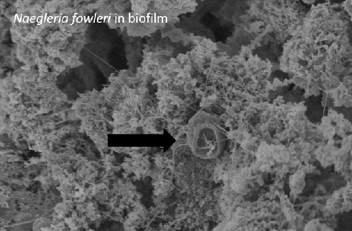Better approaches to biosolids
A new biosolids hub in north-western Sydney is the culmination of a five-year project that will service the rapidly growing part of the city.
Based in St Marys, the new hub addresses urban growth, complex asset renewals, regulatory change and sensitive environmental constraints in the area.
Presenting the project at Ozwater’21, Aurecon Senior Process Engineer Angus Wilkie explained the project had specific sustainability goals.
“Enabling green energy generation, allowing co-digestion of external wastes and allowing recovery of the treated biosolids,” he said.
Among the project accomplishments were a lower lifecycle cost that resulted from re-using existing infrastructure, reducing the carbon footprint and community impact, and achieving a predicted power reduction of more than 85 per cent as compared to a traditional plant.
“The forecast power reduction of the site compared to a traditional anaerobic digestion site was from 25 gigwatt hours per year to about three gigawatt hours per year through that energy recovery process,” Wilkie said.
By combining the streams from the St Marys plant with solid streams from a Quakers Hill plant through a pumped transfer, the project was able to create efficiencies that permitted it to benefit from thermal hydrolysis and waste heat recovery. The solution improved the performance of digesters, and also allowed existing digesters to be re-used, minimising new construction.
Wilkie said the plant provided a benchmark for the growth in north and southwest Sydney.
“The project provides a sustainable approach to developing the growing north-west region,” he said. “The reduced transport of biosolids worked out at 200 tonnes per week.”
Less heat, better function
Another utility finding success with innovative approaches to anaerobic digestion is Allwater in South Australia. Seeking to improve the performance of its wastewater treatment plant at Christies Beach, the company undertook a trial to reduce the temperature at which it undertook its anaerobic digestion of sludge.
“The digesters were heated to 35 degrees with a dual heat source,” explained Allwater Site Engineer Caroline Herman.
“We’re not 100% sustainable in terms of heat, so our engine only works 19 to 20 hours per day. In the four to five remaining hours, the boilers kick in to maintain that heat.”
Herman wondered whether a different approach was possible.
“We wanted to do a bit of lateral thinking and determine what we could actually do with our asset rather than operate according to design,” she said.
“And try and decrease our anaerobic temperature — still within the range of mesophilic anaerobic digestion — but towards that low range of 30 degrees.”
During a feasibility study, the team discovered that it had sufficient heat during the summer months and needed extra heat in the winter. This process identified that the plant’s boilers would turn on in the summer, even though they were not needed.
“We developed a trial plan, and we had two step-decreases planned,” Herman said. “The first one from 35 to 33 degrees, and the second one from 33 to 30.”
After laboratory testing, a full-scale trial begun, which ended up showing that the plant could reduce the heat it uses without significant change in biogas production and no noticeable impact on natural gas use.
However, a review that found a risk with arc flash halted the second stage of the trial, which was to see the step-decrease in heat go from 33 degrees to 30 degrees.
“The trial is still ongoing, and we’re just thinking about restarting it now with the changes to the switchboard due to the safety risks,” Herman said.

